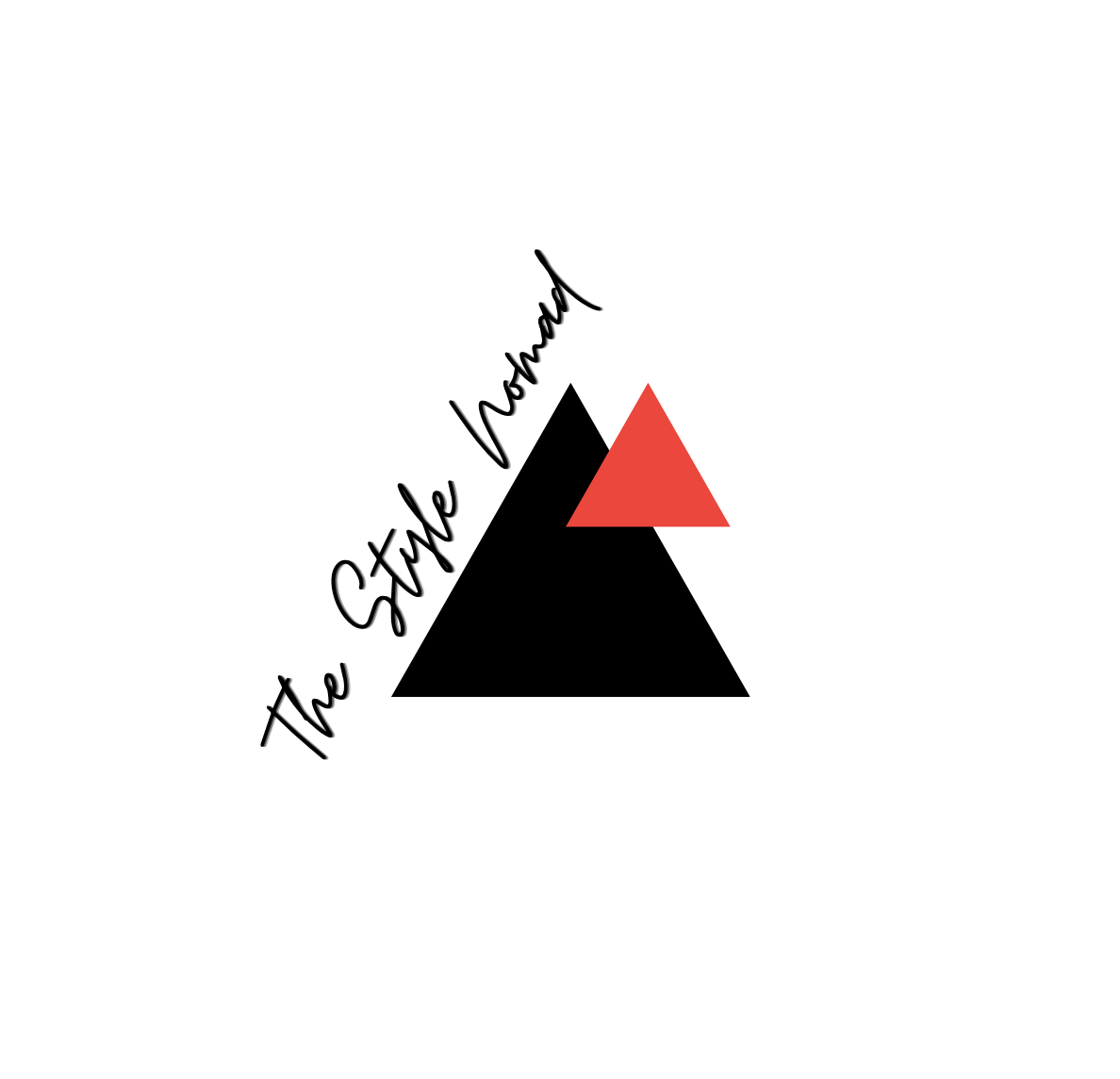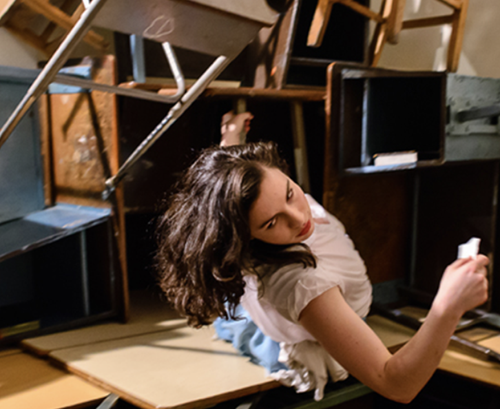Then She Fell
“Countless doors inside this house,
Filled my mind with dance and art.
I had some tea, infused with scent,
got some keys along my quest,
So come with me, don't be scared,
behind the scenes of Then She Fell”
by Miguel Sagaz
When I found out that Third Rail Productions was staging an immersive theatrical experience based on Lewis Carroll's texts “Through The Looking Glass” (Charles Lutwidge Dodgson), my interest in continuing to share this theatrical movement with readers led me to contact artistic director Tom Pearson.
After working on the logistics, which are necessary and expected when producing an interview of this caliber, I find myself buying my ticket once again to New York. I live in Los Angeles, but it is already the fourth interview that I produce in this city.
This time the show is located in Williamsburg, Brooklyn. A few stops and transfers on the city subway leave me in what could be the suburb of any American city. I walk in search of 195 Maujer Street, the place where the legendary room of the St. John church is located (formerly a well-known psychiatric center) that today serves as a scenic space for the installation.
This rainy afternoon adds a certain noir mood to my theatrical expectation, and at the same time I enjoy the contrast to the everyday Californian heat. I imagine that many readers will agree with me that there is a certain magic in the unknown. Nerves and excitement are a given before any event or experience. And this was no exception.
Upon entering through the main door, I was greeted by two 'nurses' who took me to the prelude of the show. There, we were given some keys, which we could use to open padlocks and thus discover clues and information relevant to the history.
Moments later and guided by different actors we were taken from room to room while we enjoyed a performance full of dance, music and elements loaded with imagery inspired by the stories of Lewis Carroll.
Without revealing any spoilers, —in order to preserve the element of surprise—, I can share that it is a highly interactive show. The public is not completely passive, since there is some interaction between the actors and the audience.
This would only be the first part of my experience with Then She Fell. The next day I would have the pleasure of interviewing Tom Pearson, the show’s artistic director.
A table in the center of the room served as a space for us to talk about the birth and evolution of this show. Then She Fell enjoys a diverse audience, but Pearson tells me that a large percentage are individuals who find themselves coming back. Immersive theater creates an intense experience that forces people to be present and return again and again. "To be present is what is often not needed today" says Pearson. And I agree with him, at this time in life our phones have become our most direct stage and we control communication, or lack there of, in a not very personal way.
Technology has managed to bring those who are far away closer together, but as a result, it distances those who are close to us. "When working on material that focuses on psychological themes, it was necessary to find a narrative that was familiar," says Pearson. For this reason, during the development of the work, the artistic directors Zack Morris, Jennine Willett and Tom Pearson decided to work with universal references and imagery so that the audience could enjoy the main language that is dance and interpretive movement.
The show functions as a mirror where the viewer sees what they need to see. The audience is confronted with ideas and situations that reflect experiences in their personal lives.
This is something very important in theater and art in general. Confront, question, reflect, imagine. One of the most relevant themes within Then She Fell is the image and the questioning of reflection. Through mirrors, the conflict of reflection is explored where the central character has two faces. It is understood that it is the same person but the struggle lays in making decisions that cause conflicts of personal interest.
In the words of Lewis Carroll “I am real, but I am not real”. Lewis Carroll's stories functioned as the basis for structuring the language and the path that the work would take. Through the story and the texts, the artistic directors explored their own reality while confronting existential themes that were imperative to include within the work.
Zach, Tom and Jennine have created a creative family and developed safe spaces for artistic exploration. Each one brings different ideas, but at the end of the day what starts as a simple idea becomes a collective. The reason why the show only admits 15 audience members at the time, is because they wanted to make sure the experience was extremely personal. There are times when the audience is alone in a room with the actors and there are times when the audience finds themselves sharing the space.
I am interested to know what Tom Pearson is left with from all this effort and work over the years. To which, after a long pause, tells me that one of the greatest lessons that the work has left him with is realizing that although the development work was extremely personal, the show works with or without him as an actor.
“When I saw the show with another actor playing my character, I realized that although the experience is different, it doesn't lose its strength, and that was a great lesson” Nobody is indispensable.
With performances continuing to sell out quickly, Then She Fell extends its season, welcoming international audiences seeking a personal, theatrical and sensory experience.
Special thanks in New York City Third Rail Projects / Tom Pearson (Co-Creative Director) / Niko Toscanos (Box Office, Cast member) Article published in Spanish for Hotbook Magazine, CDMX Volume 019.
SPANISH VERSION BELOW
Cuándo me enteré que Third Rail Productions estaba poniendo en escena una experiencia teatral inmersiva basada en los textos de Lewis Carroll “Through The Looking Glass” (Charles Lutwidge Dodgson), mi interés por continuar compartiendo este movimiento teatral con los lectores en México y Latino America me llevó a contactar al director artístico Tom Pearson.
Después de pasar varios filtros, mismos que son necesarios y esperados a la hora de producir un reportaje de este nivel, me encuentro comprando mi boleto una vez más a Nueva York. Vivo en Los Angeles, pero ya es la cuarta entrevista que produzco en esta ciudad.
En esta ocasión el show se ubica en Williamsburg, Brooklyn. Unas cuántas paradas y transferencias en el metro de la ciudad me dejan en dónde podría ser el suburbio de cualquier ciudad americana. Camino en búsqueda del número 195 de la calle Maujer, lugar dónde se encuentra la legendaria sala de la iglesia St. John (Anteriormente un reconocido centro psiquiátrico) que hoy funge como espacio escénico para la instalación.
Esta tarde lluviosa agrega cierto mood noir a mi expectativa teatral, y al mismo tiempo disfruto el contraste al cotidiano calor californiano.
Me imagino que muchos lectores coincidirán conmigo en que existe cierta magia en lo desconocido. Cierto nerviosismo a la antesala de algún evento o experiencia. Y ésta no fue ninguna excepción.
Al entrar por la puerta principal, me recibieron dos ‘enfermeras’ quienes después de un par de indicaciones me llevaron a la antesala del show dónde nos fueron otorgadas unas llaves, mismas que podríamos usar para abrir candados y descubrir así pistas e información relevantes a la historia.
Momentos después y guiados por diferentes actores fuimos llevados de cuarto en cuarto mientras disfrutamos de una puesta escena llena de danza, música y elementos cargados con imágenes inspirados en los relatos de Lewis Carroll.
Sin revelar grandes detalles, para así conservar el elemento de sorpresa, puedo compartirles que es un show fuertemente interactivo. El público no es completamente pasivo, ya que existe interacción entre los actores y la audiencia.
Esta sería solo la primera parte de mi experiencia con Then She Fell. Al día siguiente tendría el placer de entrevistar a Tom Pearson, director artístico de la obra.
Una mesa en el centro de la sala nos sirvió como espacio para platicar sobre el nacimiento y la evolución de este espectáculo.
Then She Fell goza de una audiencia muy diversa pero Pearson me confiesa que un gran porcentaje se concentra en individuos que en encuentran en el teatro inmersivo una experiencia
intensa que les obliga a estar presentes y regresar una y otra vez. “Presencia es lo que muchas veces no hace falta hoy en día” comenta Pearson.
Y coincido con el, en este momento de la vida nuestros teléfono se han vuelto nuestro proscenio más directo y controlamos la comunicación o falta de ésta de una manera poco personal. La tecnología ha logrado acercar a quienes están lejos pero alejan como resultado a los que tenemos cerca.
“Al trabajar en material que se centra en temas psicológicos era necesario encontrar una narrativa que fuera conocida” asegura Pearson. Por esta razón durante el desarrollo de la obra los directores artísticos Zack Morris, Jennine Willett y Tom Pearson decidieron trabajar con referencias e imágenes universales para que el público pudiera disfrutar del lenguaje principal que es la danza y el movimiento interpretativo.
La obra funciona como un espejo donde el espectador ve lo que necesita ver. El público se confronta con ideas y situaciones que reflejan experiencias en su vida personal. Esto es algo importantísimo en el teatro y el arte en general. Enfrentar, confrontar, cuestionar, reflexionar, imaginar. Uno de los temas más relevantes dentro de Then She Fell es la imagen y el cuestionamiento del reflejo. Por medio de espejos se explora el conflicto del reflejo dónde el personaje central tiene dos caras. Se entiende que es la misma persona pero la lucha está en tomar decisiones que causan conflictos de interés personal. En palabras de Lewis Carroll “Soy real, pero no soy real”.
Las historias de Lewis Carroll funcionaron como base para estructurar el lenguaje y el camino que llevaría la obra. Por medio de la historia y de los textos los directores artísticos exploraban su propia realidad mientras se confrontaban con temas existenciales que eran imperativos incluir dentro de la obra.
Zach, Tom y Jennine han creado una familia creativa y han desarrollado espacios seguros para la exploración artística. Cada uno aporta ideas diferentes, pero al final del día lo que comienza como una simple idea se vuelve un colectivo.
La razón por la cual el show admite solo 15 miembros de audiencia es porque querían asegurarse de que la experiencia fuera extremadamente personal. Hay veces en que el público se encuentra solo en un cuarto con los actores y hay momentos dónde el público se re-encuentra compartiendo el espacio.
Y concluyendo sobre todo el trabajo que han realizado en la obra, me interesa saber con que se queda Tom Pearson de todo este esfuerzo y trabajo de años. A lo que después de una larga pausa me confiesa que una de las lecciones más grandes que le ha dejado la obra es darse cuenta que aunque el trabajo de desarrollo fue extremadamente personal, el show funciona con o sin el como actor. “Cuándo vi el espectáculo con otro actor representando a mi personaje, me di cuenta que aunque la experiencia es distinta no pierde su fortaleza, y esa fue una gran lección”
Nadie es indispensable.
Con funciones que continúan agotándose rápidamente Then She Fell extiende su temporada dándole la bienvenida al público internacional que busca una experiencia personal, teatral y sensorial.
Special thanks in New York City
Third Rail Projects / Tom Pearson (Co-Creative Director) / Niko Toscanos (Box Office, Cast member)
Artículo publicado en exclusiva para Hotbook Magazine, Mexico DF Tomo 019.














